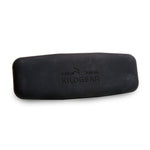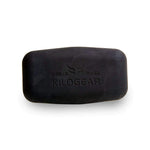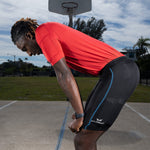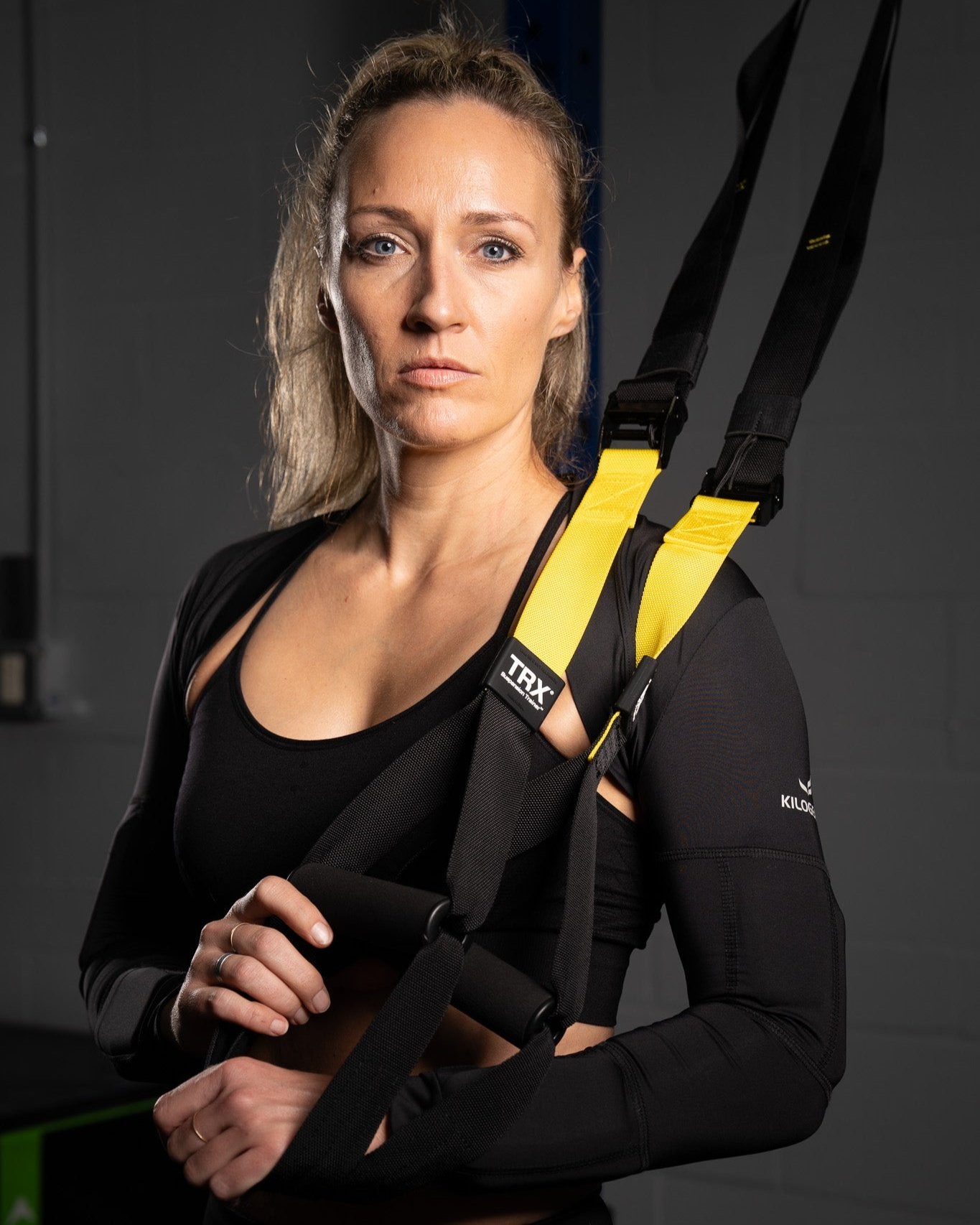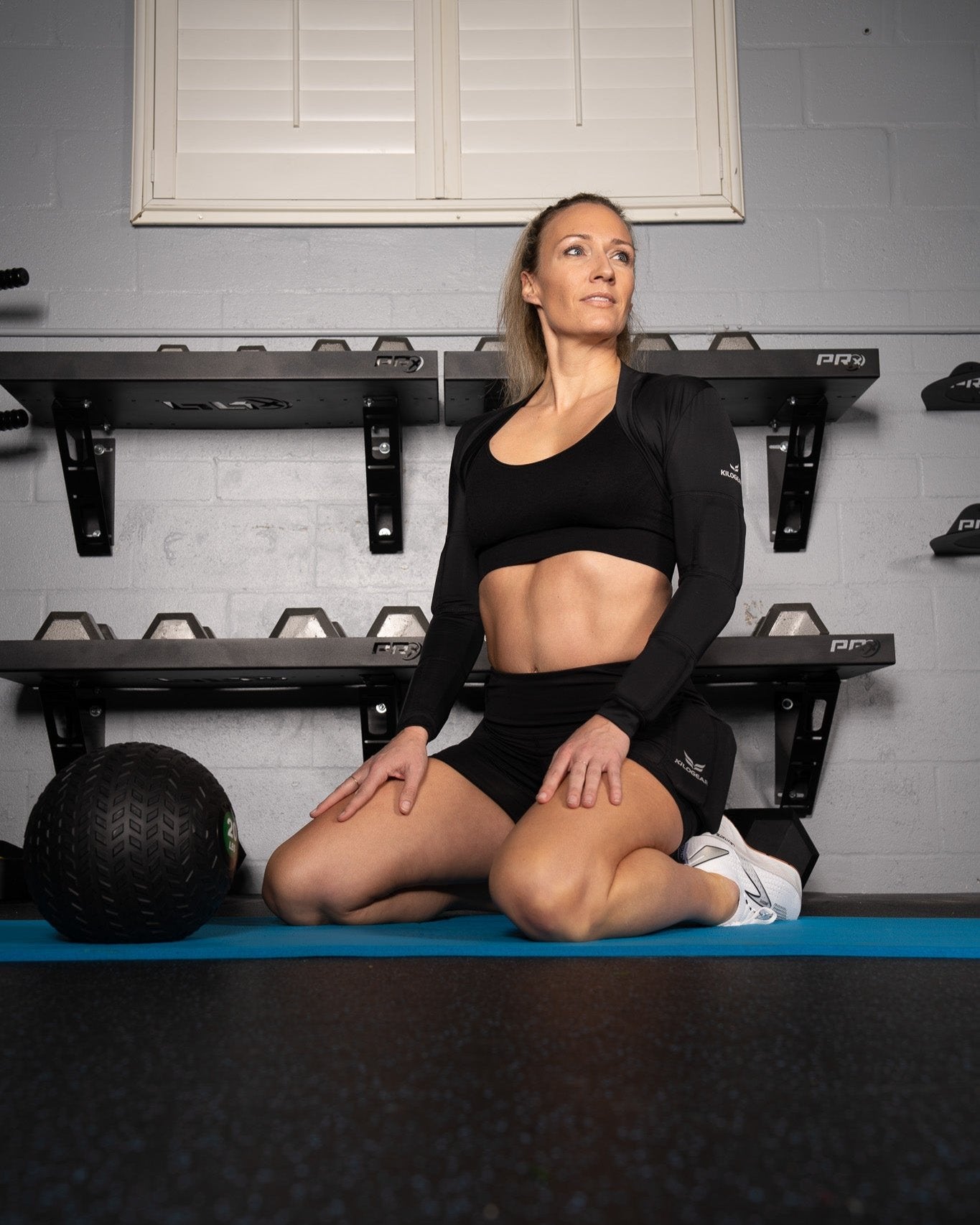When you think of your body’s core, you might picture the muscles in your midsection—but it’s so much more than that.
Your core is the central powerhouse of your body, responsible for almost every movement you make. It connects your upper and lower body, supports your spine and pelvis, and plays a crucial role in your overall health and fitness. In fact, a strong core is essential for maintaining balance, stability, and preventing injuries.
But your core also tells a story about your health. For many people, extra weight around the midsection—often referred to as love handles, saddlebags, or a muffin top—is a sign that something needs to change. This extra weight is usually the result of consuming more calories than you burn, leading to the buildup of subcutaneous fat just beneath the skin. Over time, these unburned calories add up, and before you know it, you’re carrying around more weight than you’d like.

Understanding the Types of Fat: Subcutaneous vs. Visceral
It’s important to understand that not all fat is created equal. The fat that sits just under your skin, known as subcutaneous fat, is what most people notice first. While it’s often considered a cosmetic concern, it can still have health implications if it accumulates excessively.
However, the more dangerous type of fat is visceral fat. This fat lies deep under the skin, surrounding your internal organs. Visceral fat is associated with a higher risk of serious health issues, including cardiovascular disease, type 2 diabetes, and other metabolic conditions. Doctors recommend that if your waist measures over 35 inches for women or 40 inches for men, it’s time to take action—not just for your appearance, but for your long-term health.
The Health Risks of a Large Waistline
A large waistline isn’t just about aesthetics—it’s a serious health risk. Abdominal fat, especially visceral fat, is linked to an increased risk of several serious health conditions, including heart disease, type 2 diabetes, and certain cancers. According to Harvard Health, managing abdominal fat is crucial for maintaining overall health and longevity. Additionally, a study involving 650,000 adults found that men with a waist size of 43 inches or more had a 50% greater risk of death than men with a 37-inch waist. For women, those with a 37-inch waist had an 80% higher risk of death compared to women with a 27.5-inch waist.
These numbers are alarming, but they also serve as a wake-up call. Reducing your waist size isn’t just about fitting into your clothes better—it’s about improving your health and extending your life.
Why Traditional Diets and Workouts Often Fail
When faced with the reality of a growing waistline, many people turn to diets or intense workout programs. However, statistics show that these methods often fail. Two out of every five people on a diet quit within the first seven days, and only one out of five make it past a month. Gyms report similar struggles, with nearly 90% of new members quitting within three months.
So, what’s the solution? The key is to find a sustainable, effective method to lose weight—one that fits into your lifestyle and doesn’t feel overwhelming. This is where KILOGEAR’s weighted clothing comes in.
Walk Off the Weight with KILOGEAR

If you’re carrying extra weight in your midsection, you may not be ready or able to jump into a high-intensity workout routine. Walking, however, is a low-impact, accessible form of exercise that can help you shed pounds safely and effectively—especially when you add KILOGEAR’s weighted clothing to the mix.
Wearing KILOGEAR’s weighted tops and bottoms which feature removable and customizable MICRO weights, activates your muscles more than walking alone. Our innovative design allows you to easily adjust the load on your extremities, such as your arms and legs, ensuring the perfect amount of resistance to engage all major muscle groups, including your core.
A study published in the Journal of Exercise Nutrition and Biochemistry highlighted the positive effects of walking on reducing waist size and body fat in obese women. Participants walked for 50-70 minutes three times a week for 12 weeks and saw an average reduction of 1.5% body fat and 1.1 inches around their waists. Now, imagine if they had been wearing KILOGEAR’s weighted gear—they would have achieved even greater results in less time!
How Much Walking Do You Need to Do?
Experts recommend aiming for an extra 10,000 steps each day. Since one pound of body fat equals approximately 3,500 calories, adding those extra steps can help you burn 2,000 to 3,500 calories each week—enough to lose about one pound per week. By incorporating KILOGEAR into your walking routine, you can increase your calorie burn even further.
If counting steps isn’t your thing, try walking an extra five miles each day. If time is a constraint, consider setting up a walking desk or treadmill in your home or office. This way, you can work and walk simultaneously—just like I am right now, wearing my KILOGEAR and typing this article!
5 Tips to Strengthen Your Core and Slim Your Waistline with KILOGEAR
To maximize your results and make the most of your KILOGEAR weighted gear, follow these tips:
- Start Slow and Gradually Increase Weight: Begin with lighter MICRO weights in your KILOGEAR clothing, especially if you’re new to resistance training. The removable MICRO weights allow you to start small and gradually increase the load as your body adapts, ensuring that you can continue challenging your muscles and burning more calories over time.
- Incorporate Core-Strengthening Exercises: While walking with KILOGEAR is highly effective, adding a few core-specific exercises can further enhance your results. Try planks, Russian twists, or leg raises to target your abdominal muscles directly.
- Focus on Posture While Walking: Good posture is crucial for engaging your core muscles. Keep your back straight, shoulders relaxed, and engage your abdominal muscles as you walk. Adjust the MICRO weights to ensure they’re evenly distributed, allowing you to maintain proper form and maximize the benefits of your workout.
- Mix Up Your Walking Routine: Vary your walking routes and speeds to keep your workouts interesting and challenging. Include hills or stair climbing to increase intensity and engage different muscle groups.
- Stay Consistent: Consistency is key to seeing results. Aim to walk with KILOGEAR regularly—whether it’s daily or several times a week. The more consistent you are, the more likely you’ll be to achieve your waistline goals.
Get Started with KILOGEAR Today
If you’ve read this far, it’s time to take the next step. Get yourself into a pair of our Men's Weighted Compression Shorts weighted or our Women's Weighted Skort! The ability to easily add or remove weight allows you to customize your training as you get comfortable, gradually increasing the load to maximize your results.Start with the lower weights in your tights or leggings and the weights in the forearm pockets of your top. As you get comfortable, gradually increase the weight to maximize your results.
Walking with KILOGEAR is the easiest, most effective way to lose weight and trim your waistline. Don’t wait—start your journey to better health today with KILOGEAR.



